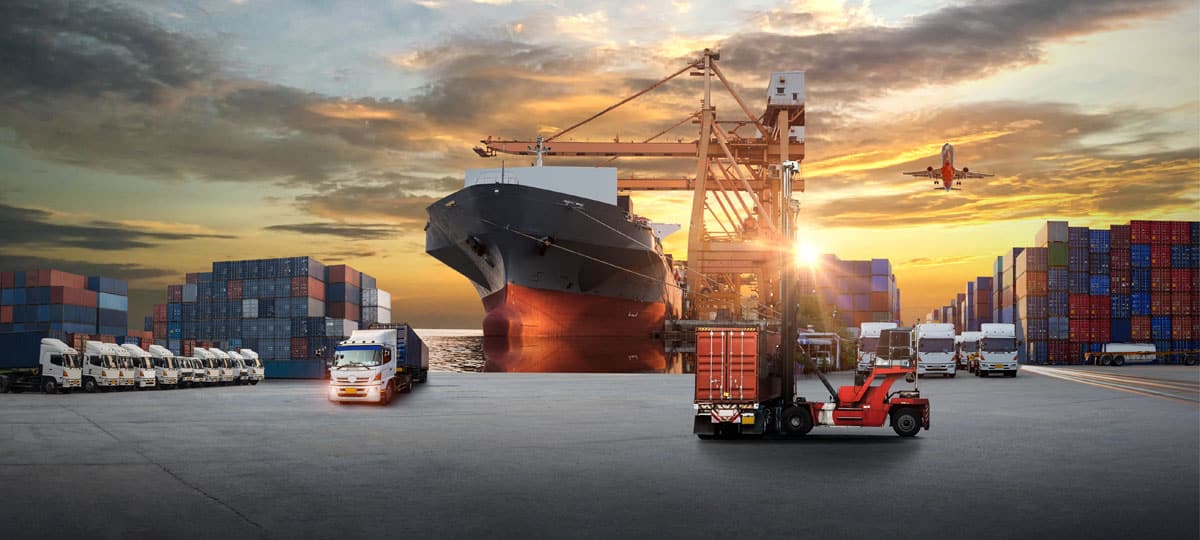Supply Chain Planning


The results of the current Industry 4.0 barometer are alarming
Only around half of production processes are automated. The study by Ludwig Maximilian University (LMU) Munich shows a large backlog in the implementation of Industry 4.0 in companies. The degree of automation and digitization in production and logistics is an indicator of the competitiveness of companies and production sites. This is documented by the "Industrie 4.0 Barometer" study by MHP and LMU with 899 industrial companies surveyed worldwide: Only 50 percent of production processes are automated. More than half of the companies are not concerned with the potential and possibilities of Industrie 4.0 or do not consider it to be target-oriented.
The ROI paralyzes the companies
For two-thirds of the companies surveyed, uncertainty about return on investment (ROI) is the key argument for a lack of commitment to digitization and automation. The extreme focus on profitability in all respects is paralyzing companies. Only very few of them are prepared to devote the necessary resources to invest in the long term and with an eye to the future.
IBP (Integrated Business Planning) is a success story in the SAP community as the successor to the legendary APO (Advanced Planner and Optimizer). But only a few existing SAP customers take on the challenge of IBP customizing. This SAP solution is extensive and complex, making it challenging to put into production. ROI on an IBP project can also take years to materialize.

“IBP offers more extensive functionalities than APO for some topics - for example, in inventory management.“
Christoph Habla,
Partner and Head of IBP, Consilio
SAP's existing customers have learned from past crises, especially with regard to supply bottlenecks, and can now localize their products much better along the entire supply chain by implementing IoT and IBP solutions. However, there is still a lack of end-to-end networking from the store floor to the back office. There is a lack of focus on profitability and investment in holistic automation solutions. Most of the thinking is done in isolated solutions.
Profitability in production and logistics takes precedence over quality, flexibility and efficiency improvements. Awareness of resource-conserving production is increasing due to uncertain supply chains and shortages of raw materials, which now also affect the company's own production. This could be the long overdue driver for more sustainable production and become a new supply chain planning. When it comes to the use of autonomous machines and robots such as automated guided vehicles, only one-third of companies worldwide are even using these technologies. But if only half of production processes are automated, those responsible not only have a deceptive self-image, but also a corresponding need to catch up.
Professor Johann Kranz of Ludwig Maximilian University in Munich: "Those who focus only on specific technologies based on ROI will not make the digitalization leap to the next level. A holistic implementation of Industry 4.0 technologies is the key to exploiting the full potential - efficiency and flexibility. Only then can a sustainable competitive advantage also be secured."
Many existing SAP customers have learned from past crises regarding supply bottlenecks and can now increase transparency in the supply chain through the successful implementation of IBP. The topic of IT security has also become much more prominent: companies are investing more in cybersecurity and dealing with it more consciously. This development is certainly also driven by the disproportionate increase in the number of IT security incidents in the last two years.
Robots are increasingly moving autonomously through the factory halls of SAP's existing customers and transporting production material from A to B. Products communicate with machines and independently initiate the next production step. And when equipment detects that it needs servicing, it automatically notifies the service technician. The fourth industrial revolution is in full swing. After the steam engine, the assembly line, electronics and IT, we now have intelligent, networked systems. They hold enormous potential for increasing efficiency, improving quality and transparent production planning. Against this background, MES (Manufacturing Execution Systems) and IBP (Integrated Business Planning) are becoming increasingly important and widespread in manufacturing companies. However, these potentials can only be realized with the right software solution.
"There is still a high demand for solutions among our customers in the area of process optimization with SAP EWM and TM," says Christoph Tieben, Arvato. "In addition, we are noticing that collaboration between different business partners in logistics value networks is becoming increasingly important. With solutions - such as the SAP Business Network for Logistics or even the exchange of digital freight documents - we help our customers further develop their supply chain management and provide the basis for cross-company collaboration." Other innovations will include efficient solutions for logistics processes based on SAP BTP (Business Technology Platform); from a mobile app - for example to support assembly on the shop floor - to a cross-system document flow monitor.
Automation and reduction
So it is not surprising that the current advances also affect the digitalization and automation of supply chains. Many companies have already addressed the issue - but there could be even more. "In times of rising prices, cost reduction in particular should be a high priority for companies. Digital and innovative solutions in particular make an important contribution to this," knows Rainer Schulz, Managing Director of Sysmat and an expert in intralogistics. "Unfortunately, these still fall by the wayside in too many companies." The study "Digitalization in Supply Chains" comes to similar conclusions: Although innovative tools are increasingly finding their way into companies, smaller companies in particular still have some catching up to do.
Postponed is not canceled: This proverb says that putting something off doesn't necessarily mean neglecting it altogether. But postponement also usually has a negative impact on companies. "In this case, all available resources are not yet used, although they are already available. Once the competition pulls away, a gap is created that is difficult to close even after the fact," says Rainer Schulz. He goes even further: "Those who hesitate too long not only lose out, but in the worst case jeopardize the existence of the company."
When it comes to digitizing supply chains, the stumbling block is not understanding the added value of solutions - in fact, since 2019, recognition of the benefits has increased by 60 percent. "But then really getting to grips with the possibilities is still difficult for many decision-makers," says the expert. Even beyond the management level, the will to implement must be further deepened.
Flexible automation technology, a technology push by IoT devices, and the challenges of digital transformation are currently shaping developments in the area of software for logistics and production. In many companies, the digital transformation is still progressing only slowly. At the same time, the shortage of skilled workers is forcing the automation of processes in order to reduce dependence on personnel. On the other hand, digitization projects are not infrequently slowed down because there is a shortage of over 100,000 programmers in the IT industry.
The demand for IT for the supply chain is high. This is because software systems support the digital transformation and open up a wide range of optimization and savings potential in the control of coordinated processes with the integration of modern automation systems. Interlocking logistics systems that create transparency, simplify cooperation, and minimize risks and costs are in demand. Accordingly, the software companies are continuously working on the further development of their portfolio by integrating current automation hardware for warehouse technology and the latest technologies such as artificial intelligence and robotic process automation.
Logistics and supply chain
Two trends can be identified in comprehensive warehouse management systems (WMS) and logistics and supply chain solutions: Providers such as SAP are working on further networking of the software landscape, if possible with systems from a single source. At the same time, a trend toward customizable standard software for the supply chain is emerging. This can be adapted to the respective customer-specific requirements through parameterization and customizing - in some cases even by the users themselves, which in the case of IBP, however, requires high investments. Based on these standard products, some providers also develop special industry solutions with predefined, modular functional scopes, which can often be obtained from the cloud and deployed at short notice. SAP IBP is one such cloud product, but its availability with "cloud only" is not accepted by all existing SAP customers.

“We have exhausted the possibilities of SAP software in very many projects with our customers.“
Jürgen Löhle,
Founder and Managing Director, Consilio
Parallel to this, many software companies are concentrating on expanding their product portfolio in their new developments for supply chain planning, see SAP APO to IBP. This is done in particular by integrating systems and functionalities of adjacent systems of the so-called horizontal level as well as applications of subordinate subsystems. One focus is on new systems, system modules and applications with functionalities e.g. for transport and fleet management, route and resource planning or dock and yard management. The latest innovations will be presented both as stand-alone systems and as functional extensions of WMS, warehouse management and material flow systems.
Hybrid software architectures, e.g. with an SAP core and enriched with modern cloud solutions, are increasingly in demand. In order to be able to react flexibly to events outside one's own control, it is not uncommon for data to be required that is stored in the cloud. It must be possible to retrieve it quickly, import it into the company's own IT network and process it there. Against this backdrop, even cloud-savvy companies are not just relying on cloudy alternatives. SAP itself has been on the market for some time with automated solutions in the area of warehouse and transport management as well as with a solution for rule-compliant customs and foreign trade processing.
Furthermore, various partners operate in the SAP environment with additional subsystems, modules and applications, such as an add-on for the integration of different automation hardware and real-time control from SAP EWM. The tool visualizes the utilization in real time and supports the planning and control of warehouse tasks.
The portal and platform idea is currently another defining aspect in the area of supply chain software. Platforms are intended to connect a large number of cloud providers and users in a transparent environment. There, large amounts of data can be exchanged, managed and used collaboratively and securely. For current requirements, there are several providers on the market offering platforms for supply chain information exchange, data analytics or IT support without installation. The core of the product offering is a data intelligence platform offered as a cloud service. It is designed to enable any number of mobile tracking devices to be merged with other data sources, e.g. from ERP systems, aggregated and analyzed automatically. Without their own resource-intensive and cost-intensive IT projects, transport and logistics companies should be able to make greater use of the opportunities offered by digitization.
The market for intelligent process automation is changing. With too many projects falling short of their return on investment targets, major customers in particular now want to know much more precisely which processes are suitable for the use of automation technologies and how well, and what needs to be done before, during and after the roll-out to ensure that the ROI of the projects is actually positive. More and more IT service providers are recognizing this need and including next-generation automation solutions in their portfolios. The new offerings are characterized by the fact that, in addition to the purely technological requirements, they also meet the consulting and organizational requirements that arise when setting up sustainable operating models.
AIOps and Machine Learning
The new provider comparison "Intelligent Automation Services Report for Germany", presented by the market research and consulting company Information Services Group, shows which providers already meet this need for consulting. The study examines the portfolio and competitive strength of 36 providers active on the German market. ISG also evaluates the two areas of Intelligent Enterprise Automation and Artificial Intelligence for IT Operations (AIOps), which are already much more established than Next Gen Automation.
The ISG study attributes the fact that the benefits of many automations fall short of expectations, among other things, to the fact that the teams were too one-sidedly concerned with purely technical aspects and too little with the question of whether it would not be better to first adapt the underlying business process before automating it. "An analog process that runs rather inefficiently is hardly improved by the use of automation technologies," says Heiko Henkes, director and principal analyst at ISG. "True, manual efforts are eliminated. But real business added value, such as greater adaptability in the supply chain or a better customer experience, can hardly be achieved with a purely technology-driven approach."
Organizational Change
In order to avoid such risks and secure the ROI of automation projects, the need for consulting and change management (Organizational Change Management) is increasing. This is not least a matter of clarifying the framework conditions under which an automation program can become effective at all. Many framework conditions are changing at ever shorter intervals and are becoming increasingly complex at the same time. Currently, for example, this concerns the requirements resulting from the new supply chain law. In addition, too much focus on technology harbors the risk that only partial steps are ever automated. It is not uncommon for the performance of the overall system to deteriorate as a result. This is because, without prior process optimization, bottlenecks remain, which come under additional pressure as a result of partial automation. The performance of the overall process then decreases rather than increases.
Against the backdrop of all these regulatory and organizational influencing factors, it is important to think in terms of end-to-end processes and thus ensure the future viability of the respective operator models. In this context, it is important to integrate all the technologies used on a uniform automation platform. In addition, the providers of next-gen automation are required to establish upskilling and cross-skilling programs in which their own employees and the customers' personnel are continuously trained.
Supply chain disruptions caused by adverse events have accumulated in recent years. They have highlighted their vulnerabilities and dependencies. Insourcing, stockpiling and regaining process sovereignty as far as possible, to name just a few examples, have become the focus of companies. Automation and digitization play a decisive role in this. The logistics world is also currently facing what feels like countless challenges: sustainability, digitization, IT security, a shortage of skilled workers, and the resilience of supply chains are just a few of the buzzwords of the day.
This is underlined, among other things, by the study "Digitalization in Supply Chains" from December last year: The German Association of Materials Management, Purchasing and Logistics (BME) and Fulda University of Applied Sciences surveyed executives from purchasing, logistics and SCM in German-speaking countries. By far the biggest driver cited in SCM was "recognizing the benefits of using digital technologies in supply chains," with an increase of around 60 percent compared to the start of the survey in 2019. 85 percent of respondents cited robotics and automation as the most prominent digitization technologies. No wonder, since automated picking systems, driverless transport systems and mobile robotics solutions have long since taken over a wide range of tasks in the supply chain.
Seventy-eight percent of companies worldwide say that business-to-business (B2B) integration has helped them improve the performance of their supply chains. These are the findings of a recent global study conducted by IDC on behalf of OpenText. According to the study, B2B integration forms the backbone of a resilient digital-first supply chain: companies that take this approach achieve higher revenues and profits, higher customer satisfaction, and better responsiveness. However, the biggest challenge lies in implementing appropriate technologies. In particular, companies that still rely on manual and paper-based processes should make B2B integration a higher priority, according to IDC.
Given the current disruptive economic environment, supply chains need to become significantly more resilient. Although 71 percent of the companies surveyed have increased spending on their supply chains, only six percent have so far been able to achieve the highest level of resilience maturity. So there is still considerable potential for development here, because only by using modern processes and technologies can companies benefit from the added value of high B2B integration maturity. Artificial intelligence (AI) and advanced analytics play a key role here.
44 percent of companies surveyed are currently using AI and machine learning (ML) to gain comprehensive predictive insights from their supply chain processes. In contrast, 17 percent say they rely only on standard analytics. Companies today need to be able to leverage all available data - in part to gain a competitive advantage. This applies to supply chains in general and to B2B information exchange in particular.
Collaboration and performance
For most companies, access to supply chain data, as well as its analysis and networking, are important processes for running their business efficiently. The results of the latest IDC survey confirm that the future of the supply chain lies in effectively linking information and automation. Advanced supply chain integration supports both current and modern approaches that directly impact business performance. For example, 80 percent of companies surveyed reported significant improvements from automating various collaboration documents - including lower information processing and sharing costs, more efficient workforce management, and improved key performance indicators (KPIs). Through B2B integration, companies benefit from lower operational and logistics costs, faster time to market, higher data quality and accuracy, and greater transparency.







